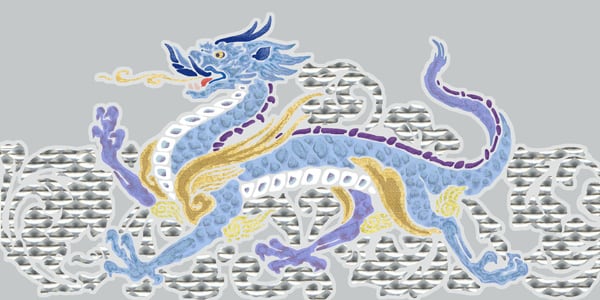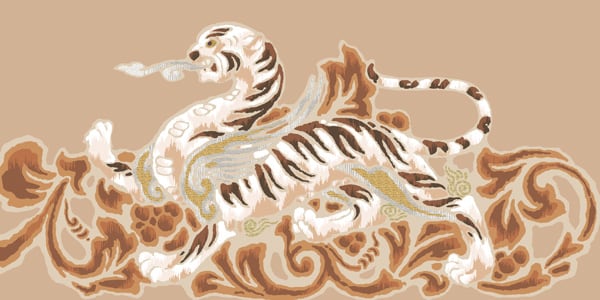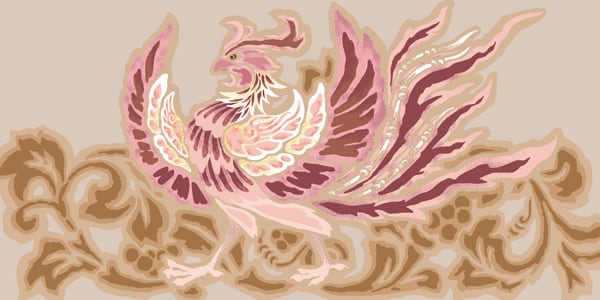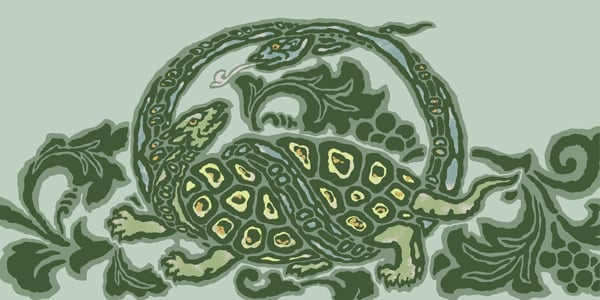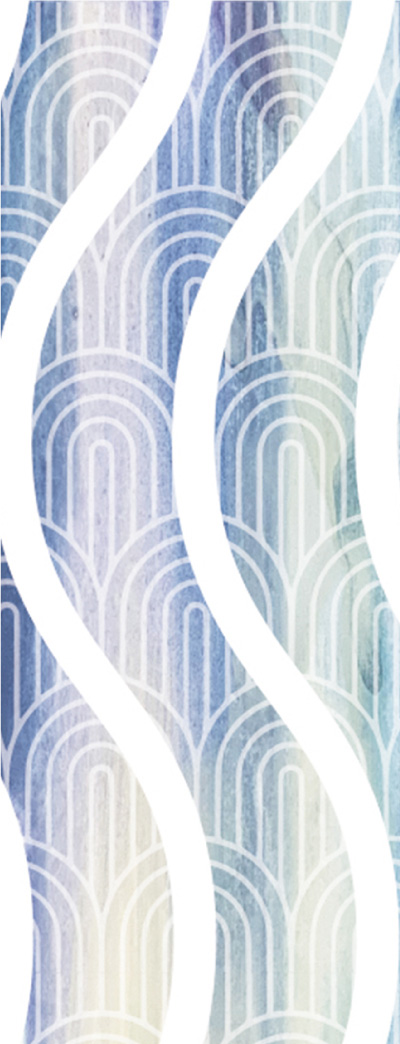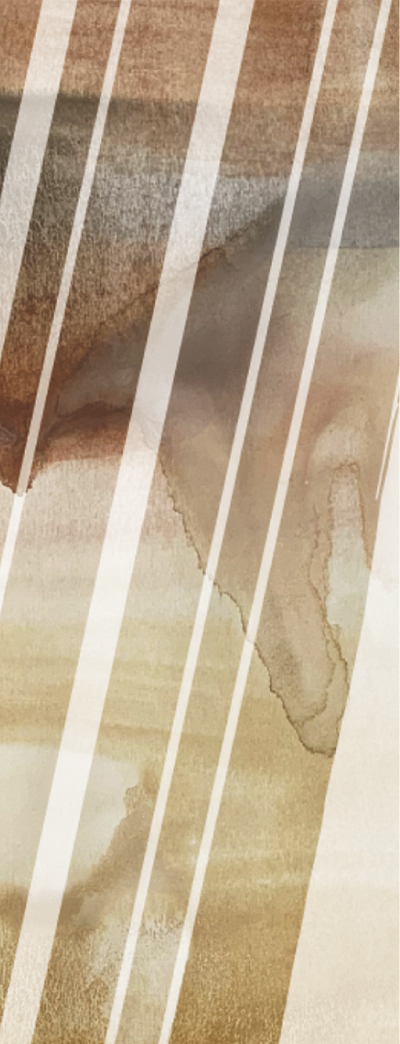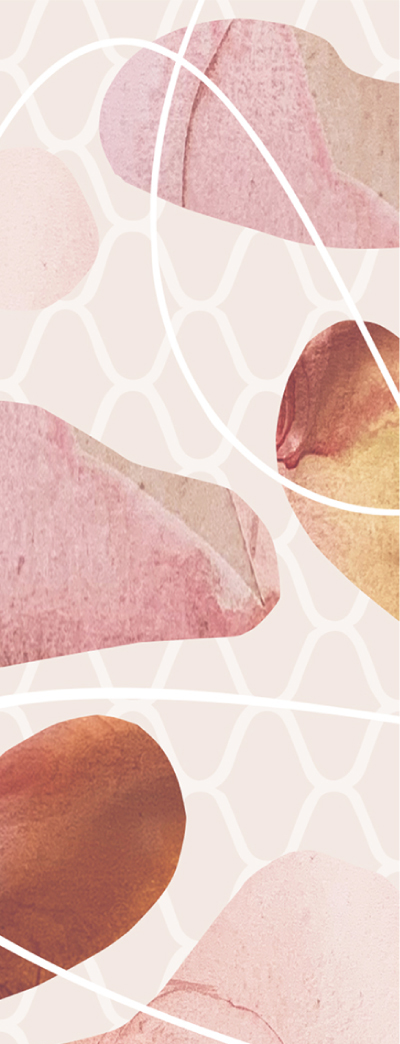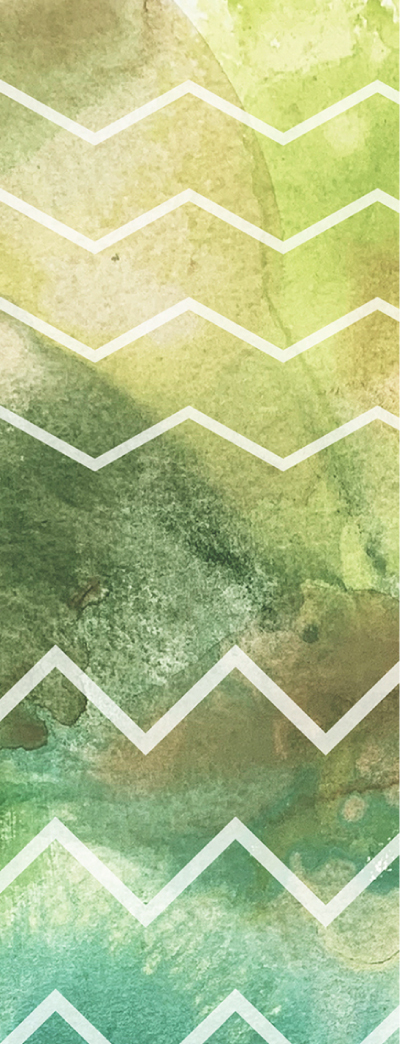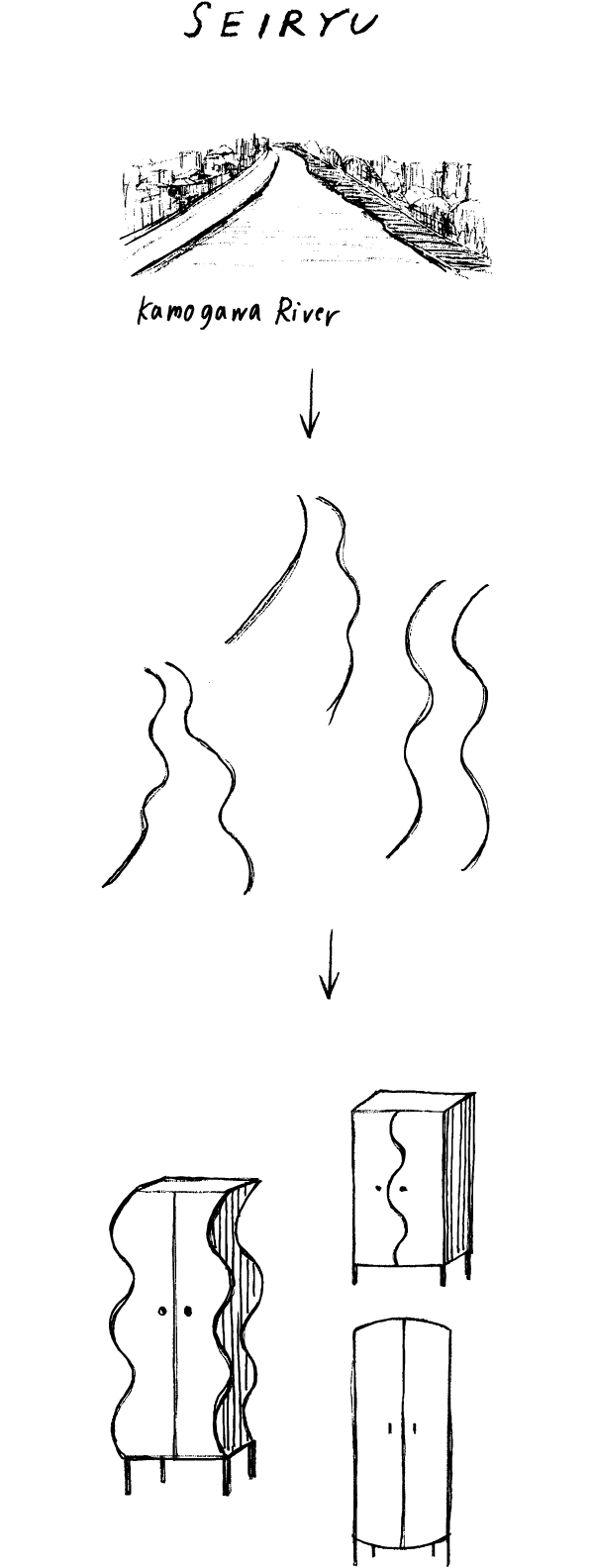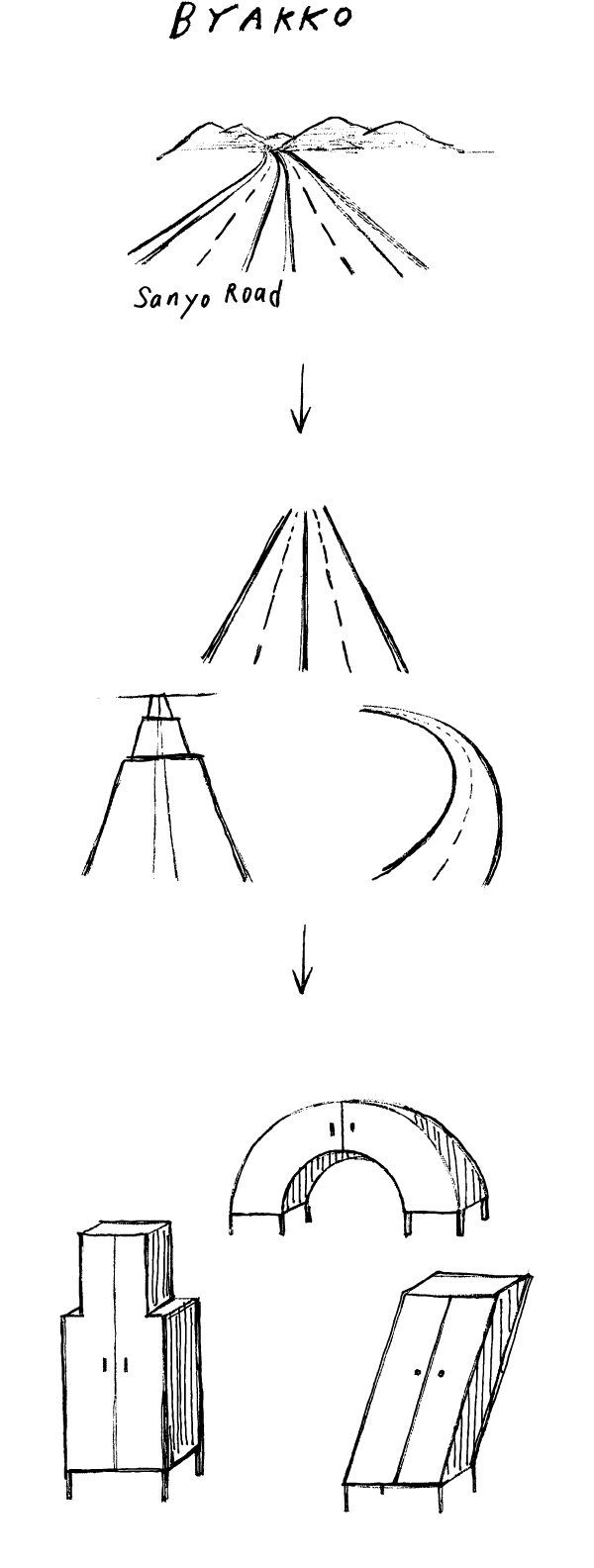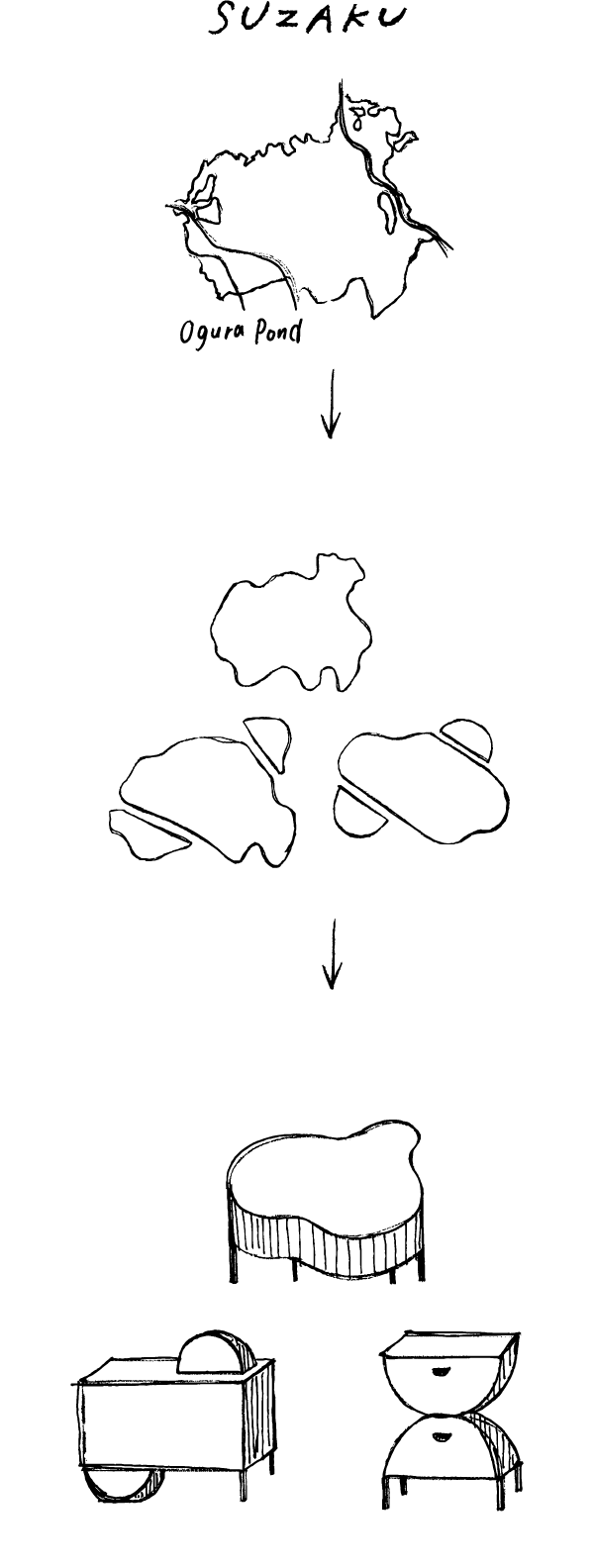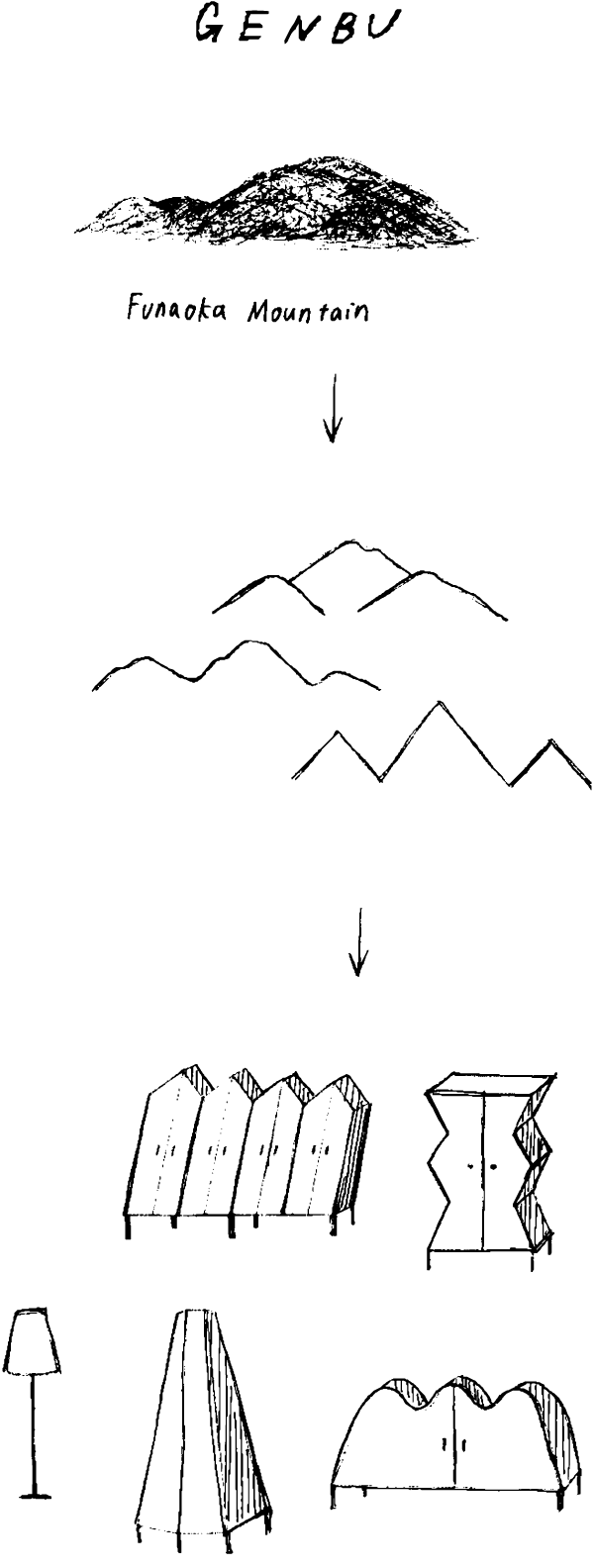
“WOVEN NARRATIVES”
The space is composed of textiles, which convey the Four Symbols and changing landscape, and the installations which depict Kyoto’s landscape (rivers, roads, ponds, and mountains).
Four Symbols
The city’s four directions are guarded by the Four Symbols.
They have guarded Kyoto’s regions (river, road, pond, and mountain) from the east, west, south and north since ancient times, and are said to keep ill luck away and help make things flow smoothly.
This exhibition features designs from Kawashima Selkon Textiles’ design archives dating back to the 1930s, as well as four traditional hand-weaving techniques, including “mon-ori” and “hikihaku”, which are commonly used for kimono obis, “tsuzure-ori”, which is used for rugs and festival floats, and “mon-birodo”, which was used for the interior at Akasaka Palace. All four techniques were used to revive the four divine guardians of Kyoto in this exhibition.
Landscapes / Gradation
The mountains, ponds, rivers, and roads of Kyoto, where the four deities are said to reside, are depicted on the textile in their respective colors and shapes, as well as in designs and related traditional patterns that were inspired by the historical background.
The diverse expressions of the landscapes are expressed through machine-weaving techniques that weave in gradations and iridescent films.
Landscapes / Form
Inspired by their colors, shapes, and historical background, the design patterns of Kyoto's rivers, roads, ponds, and mountains were created and blended into the form of each object.
